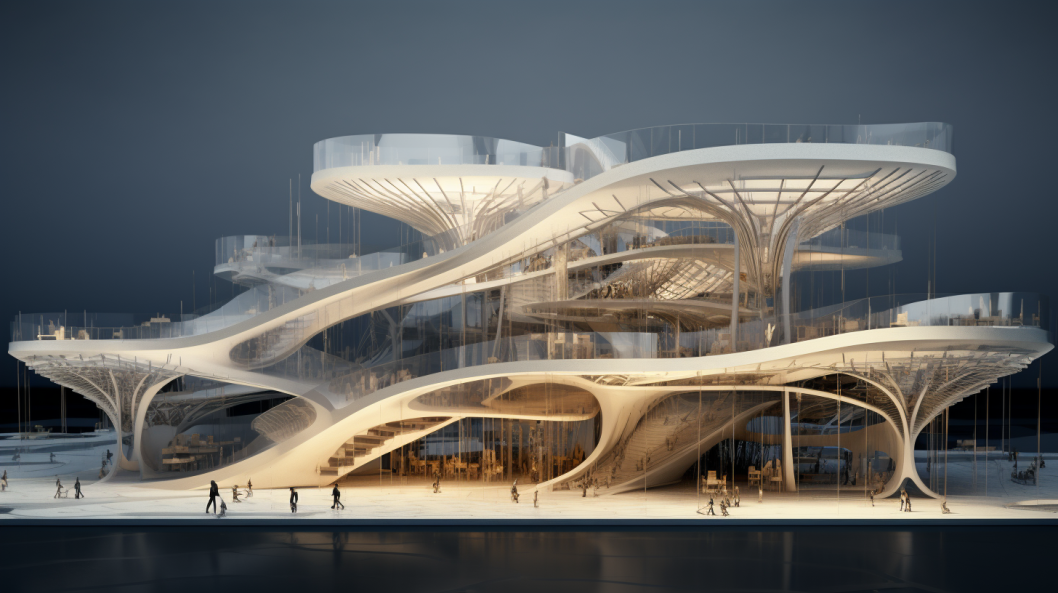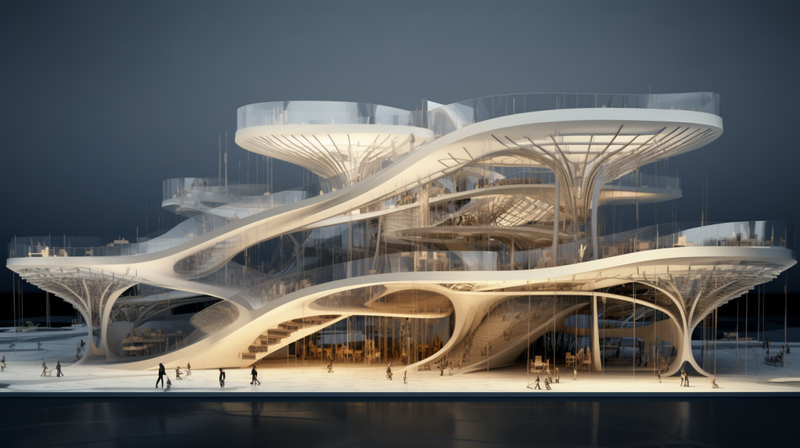Computer-Designed Buildings: The Quiet Way Algorithms are Changing Architecture
In our busy modern cities, there's a quiet but powerful force of change at work: generative algorithms. These subtle mathematical rules and procedures are silently changing the traditional ways of architectural design, bringing a new order to the bustling urban landscape. This article explores the special relationship between generative algorithms and architectural designs, looking at the quiet but steady transformation they are bringing to our built world.
A Mix of Art and Computer Rules
Traditionally, architects and designers were limited by their own creativity and the old ways of building. However, behind the impressive outer walls and within the hidden parts of structures, generative algorithms have brought about a new beginning. By putting design rules and limitations into algorithms, architects can start a computer process that can create countless design possibilities, expanding what can be imagined and ultimately built.
Essentially, where generative algorithms provide a strong framework—a complex network of data-driven and computer-generated structures—digital artistry then covers this framework with a "skin" that is full of creativity, new ideas, and often, a powerful reflection of societal details.
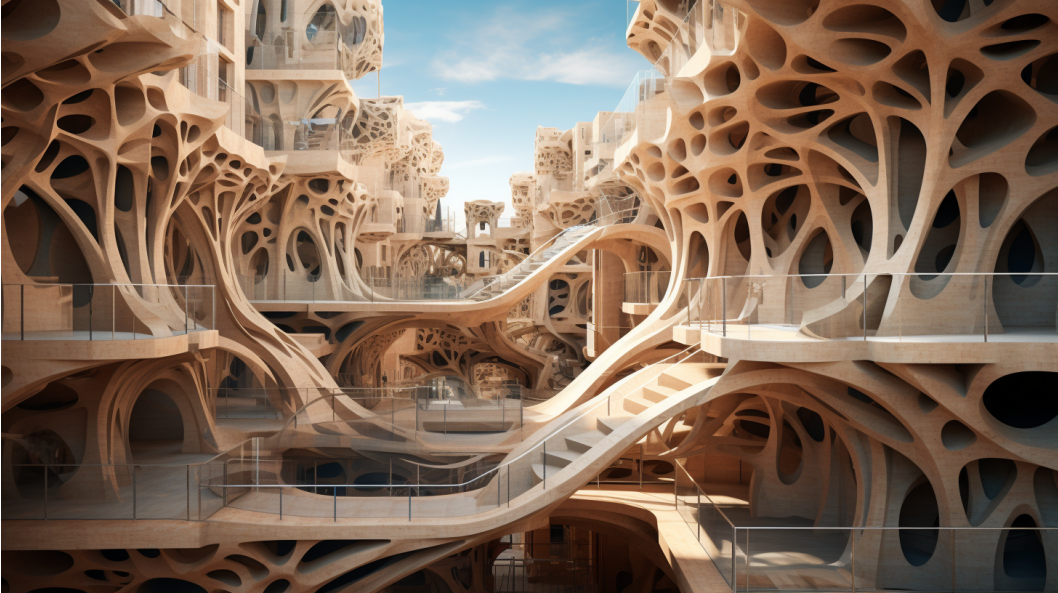
Making Designs Adaptive
Generative algorithms stand at the meeting point of technology and design, providing a framework that is as adaptable as nature itself. They embed an evolutionary approach within the design process, using specific settings and rules to explore a wide range of design possibilities. This isn't just about how things look or being innovative; it's about making things adapt and work well. The algorithms can create designs that respond to changing environmental conditions, shifts in population, and cultural differences, ensuring the designs remain relevant and sustainable.
The Quiet Power of Efficiency
Remarkably, this transformative partner works in a subtly quiet way. Generative algorithms process thousands, even millions, of design variations, tirelessly evaluating and improving designs with an efficiency that makes traditional design methods seem slow. This quiet effectiveness ensures that architects can explore a vast range of designs, silently making structural shapes, materials, and energy use better, without the painstaking manual work of the past.
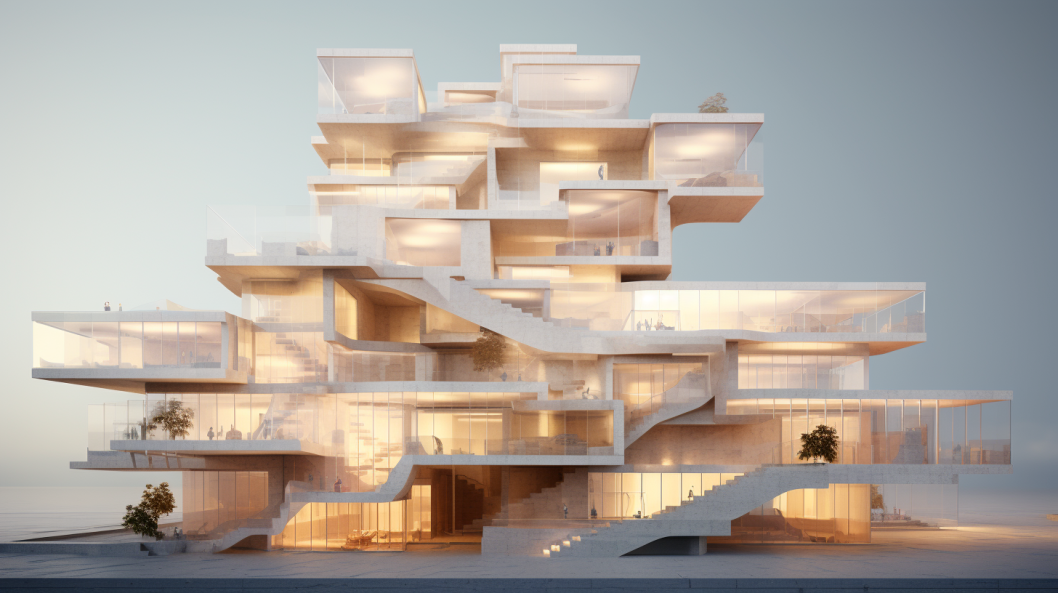
The Unseen Partner in Sustainability
In the context of our changing relationship with our planet, generative algorithms have allowed architects to weave sustainability into the very core of their designs. Through optimized computer simulations, these algorithms help evaluate how different aspects of designs interact with environmental factors. From making the best use of natural light to improving energy efficiency and minimizing material usage, they quietly help us build structures that are in harmony with the environment.
Algorithms and Creativity: A Quiet Conversation
At first glance, algorithms might seem to be the opposite of the creative spirit that has traditionally driven architectural innovation. However, there is a quiet, deep conversation happening between the algorithm and the architect. Creativity isn't stifled; instead, it is enhanced and expanded by the endless possibilities presented through algorithmic explorations. Through this, architects can explore new paths, ensuring that creativity goes beyond traditional limits and influences every part of our built environment.
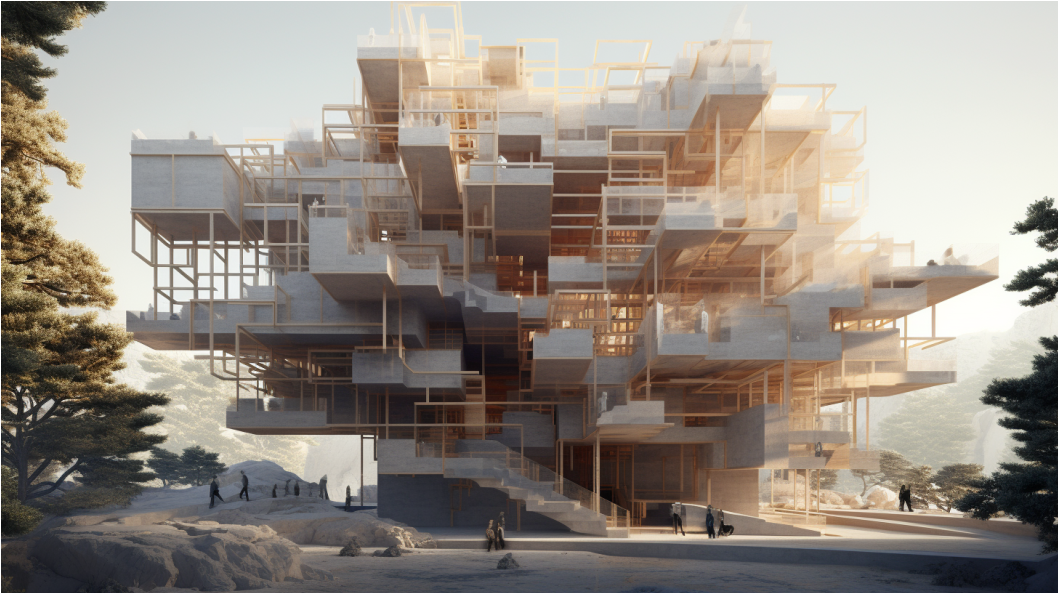
Quietly Shaping the Future
As the role of generative algorithms in architecture continues to grow, it unfolds a future where designs are not just visually pleasing but are smoothly connected with function, environment, and sustainability. The quiet, unseen calculations enable the combination of form and function, creating a future where our built environment evolves, not as a series of disconnected objects but as an adaptable, coherent, and sustainable organism.
In conclusion, the union of architectural skill and algorithmic intelligence is shaping a future that respects the past, stands strong in the present, and looks, with an adaptable eye, into the future. Generative algorithms, though silent and unseen, are the hidden partners guiding us towards a new way of thinking where architectural designs are not fixed imprints, but living, evolving entities in a constant conversation with their inhabitants and their environment. This quiet revolution, driven by digital processes and algorithms, orchestrates a symphony where every brick, beam, and bolt becomes a note in a melody of continuous, harmonious evolution.
